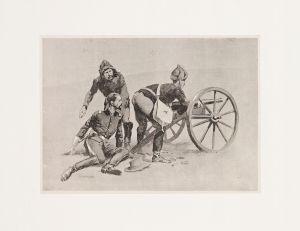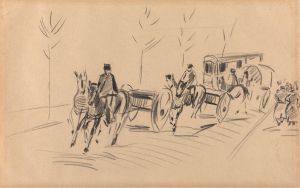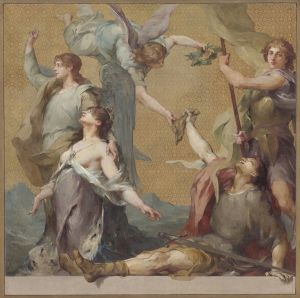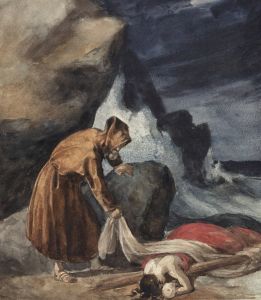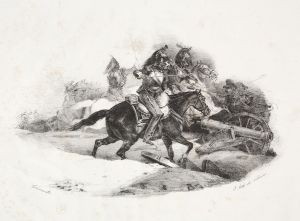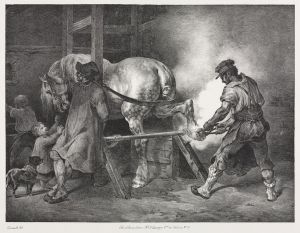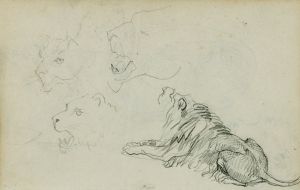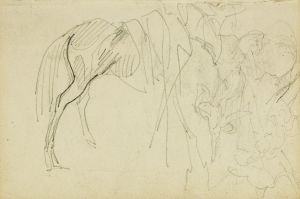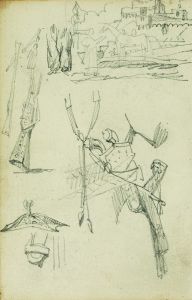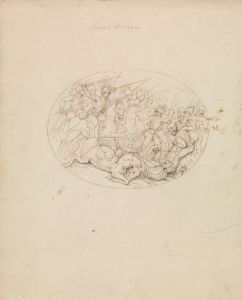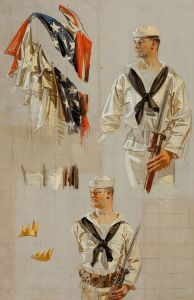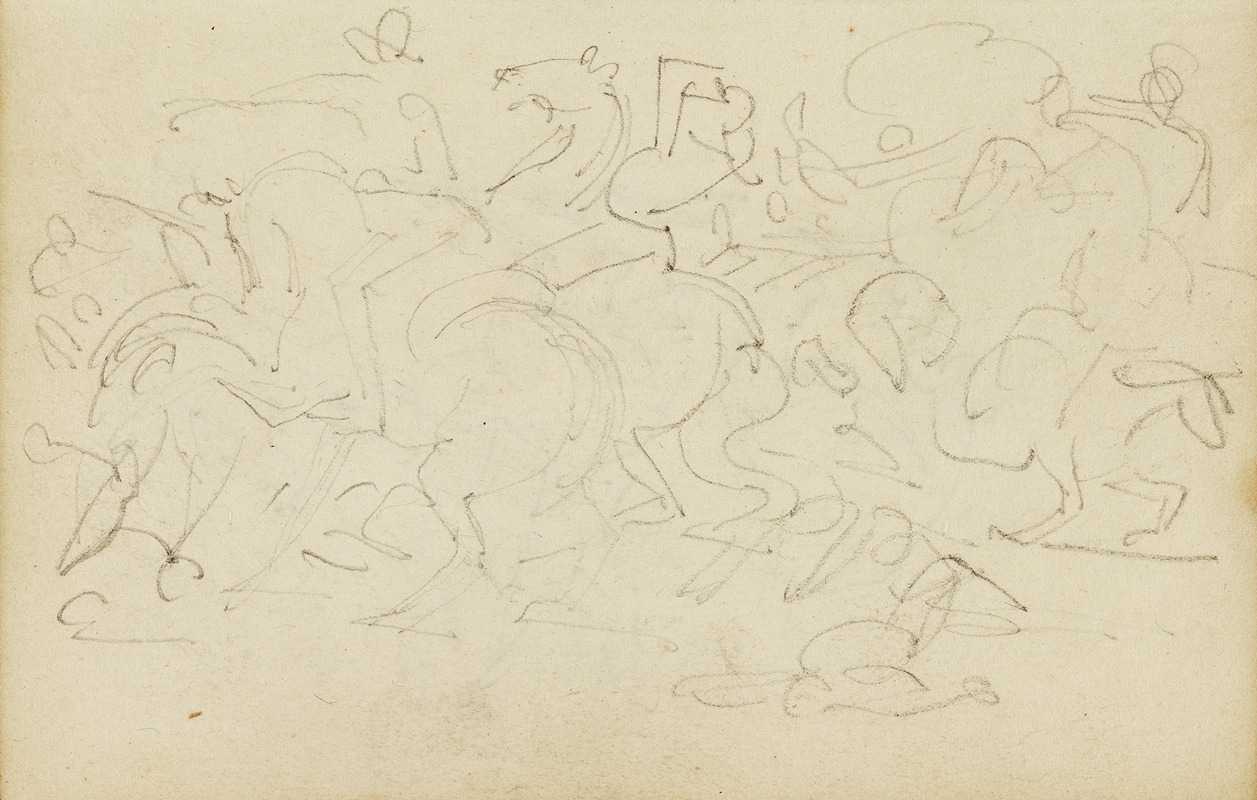
Cavalry skirmish
A hand-painted replica of Théodore Géricault’s masterpiece Cavalry skirmish, meticulously crafted by professional artists to capture the true essence of the original. Each piece is created with museum-quality canvas and rare mineral pigments, carefully painted by experienced artists with delicate brushstrokes and rich, layered colors to perfectly recreate the texture of the original artwork. Unlike machine-printed reproductions, this hand-painted version brings the painting to life, infused with the artist’s emotions and skill in every stroke. Whether for personal collection or home decoration, it instantly elevates the artistic atmosphere of any space.
Théodore Géricault, a prominent French painter and lithographer, is best known for his influential work in the Romantic movement. One of his notable paintings is "Cavalry Skirmish," which exemplifies his fascination with dynamic movement and dramatic subject matter. Géricault was born in 1791 in Rouen, France, and he showed an early interest in art, studying under renowned artists such as Pierre-Narcisse Guérin. His career, though tragically short, left a significant impact on the art world, particularly through his masterpiece "The Raft of the Medusa."
"Cavalry Skirmish," created around 1812, reflects Géricault's interest in military themes, a common subject during the Napoleonic era. This painting captures the chaos and intensity of a cavalry battle, showcasing Géricault's skill in rendering movement and emotion. The composition is characterized by its vigorous brushwork and dramatic use of light and shadow, which heighten the sense of action and urgency. Géricault's ability to convey the tumultuous energy of battle scenes was influenced by his admiration for earlier masters such as Peter Paul Rubens and the dramatic compositions of the Baroque period.
The painting depicts a fierce encounter between cavalry units, with soldiers and horses entangled in a chaotic melee. Géricault's attention to detail is evident in the realistic portrayal of the horses, which are rendered with anatomical precision and dynamic poses. The artist's fascination with equine subjects is a recurring theme in his work, as seen in other paintings and studies focusing on horses. In "Cavalry Skirmish," the horses are not merely background elements but central figures that contribute to the overall drama of the scene.
Géricault's choice of subject matter in "Cavalry Skirmish" reflects the broader cultural and historical context of early 19th-century France. The Napoleonic Wars, which spanned from 1803 to 1815, were a defining period in European history, and their influence permeated the arts. Artists like Géricault were drawn to themes of heroism, conflict, and the human condition, often using military subjects to explore these ideas. "Cavalry Skirmish" can be seen as part of this tradition, capturing the spirit of an era marked by both glory and tragedy.
The painting also demonstrates Géricault's departure from the neoclassical style that dominated French art in the late 18th and early 19th centuries. Instead of idealized forms and static compositions, Géricault embraced a more dynamic and expressive approach, paving the way for the Romantic movement. His work, including "Cavalry Skirmish," is characterized by its emotional intensity and focus on the sublime aspects of human experience.
While "Cavalry Skirmish" may not be as widely recognized as "The Raft of the Medusa," it remains an important example of Géricault's artistic development and his contribution to the Romantic movement. The painting is housed in the Musée du Louvre in Paris, where it continues to be appreciated for its technical mastery and evocative portrayal of a moment in history. Through works like "Cavalry Skirmish," Géricault's legacy endures, influencing subsequent generations of artists and shaping the course of modern art.





